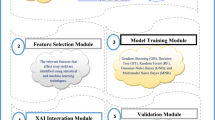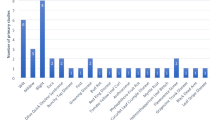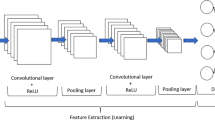Abstract
Motivation
Crop diseases pose a critical threat to global food security, causing substantial agricultural yield losses. Manual disease identification is labor-intensive and requires expertise, hindering timely and accurate detection.
Problem Gap
Traditional methods for identifying plant diseases are time-consuming and demand specialized knowledge. The need for a more efficient, automated, and accurate approach is evident to minimize crop losses and ensure food security.
Contribution
This research paper addresses the challenge of plant disease detection by proposing a novel approach that combines image processing and deep learning techniques. The primary contribution is a sophisticated deep neural network ensemble model, which integrates Residual Network, MobileNet, and Inception models. This ensemble architecture is designed to maximize accuracy and robustness in disease classification. The model is trained on an extensive dataset containing images of both healthy and infected potato leaves. It accomplishes the precise categorization of leaves into three classes: healthy potato leaves, infected potato leaves (two classes). The model's proficiency lies in its ability to discern intricate leaf features, colors, and types, enabling it to differentiate between healthy and potentially diseased leaves. This research makes a significant contribution to the development of automated disease detection systems. By bridging the gap between manual identification and advanced technology, it presents a promising solution for early disease detection and prevention. Ultimately, this approach can foster increased agricultural productivity, ensuring enhanced food security on a global scale.
Results
Results demonstrate the proposed model's effectiveness, achieving an impressive overall accuracy of 98.86%. This high accuracy attests to the model's competence in precisely detecting and classifying potato diseases. By harnessing the potential of ensemble-based deep learning and image processing, this research introduces an innovative tool for agriculturalists and researchers.










Similar content being viewed by others
Data availability
Data sharing is not applicable to this article as no datasets were generated or analysed during the current study.
References
Exploring challenges and developing solutions for food security across 113 countries. Global Food Security Index 2022. https://impact.economist.com/sustainability/project/food-security-index/
P Jha, D Dembla, W Dubey (2023) "Comparative Analysis of Crop Diseases Detection Using Machine Learning Algorithm", IEEE 3rd International Conference on Artificial Intelligence and Smart Energy
S. Bangari P. Rachana, N Gupta, PS Sudi, KK Baniya (2022) "A Survey on Disease Detection of a potato Leaf Using CNN," 2022 Second International Conference on Artificial Intelligence and Smart Energy (ICAIS). 144–149
V Kukreja, A Baliyan, V Salonki, RK Kaushal (2021) "Potato Blight: Deep Learning Model for Binary and Multi-Classification", IEEE 2021 8th International Conference on Signal Processing and Integrated Networks (SPIN). 967–672
Rashid J, Khan I, Ali G, Almotiri SH, AlGhamdi MA, Masood K (2021) Multi-Level Deep Learning Model for Potato Leaf Disease Recognition. MDPI J Electronics 10(17):2064
Lee T-Y (2021) I-An Lin, Jui-Yuan Yu, Jing-min Yang and Yu-Chun Chang, “High Efficiency Disease Detection for Potato Leaf with convolutional neural network.” Springer SN Computer Sci 2:297
Yu Oishi, Harshana Habaragamuwa, Yu Zhang, Ryo Sugiura, Kenji Asano, Kotaro Akai, Hiroyuki Shibata, Taketo Fujimoto (2021) "Automated abnormal potato plant detection system using deep learning models and portable video cameras", International Journal of Applied Earth Observation and Geoinformation, Volume 104
Md. Ashiqur Rahaman Nishad, Meherabin Akter Mitu, Nusrat Jahan (2022) "Predicting and Classifying Potato Leaf Disease using K-means Segmentation Techniques and Deep Learning Networks", Procedia Computer Science, Volume 212, Pages 220–229
K He, X Zhang, S Ren, J Sun (2016) "Deep Residual Learning for Image Recognition", 2016IEEE Conference on Computer Vision and Pattern Recognition(CVPR), pp. 770–778
Xiao Yuelei, Xiao Xing (2019) An Intrusion Detection System Based on a Simplified Residual Network. MDPI J Information 10(11):356
Sasikala Vallabhajosyula, Venkatramaphanikumar Sistla, Venkata Krishna Kishore Kolli (2021) "Transfer learning based deep ensemble neural network for plant leaf disease detection", Journal of Plant Diseases and Protection. 1–14
Salem A, Mohamed MA, Hassanien AE, Tolba HF (2019) A Deep Learning Approach for Early Detection and Classification of Potato Diseases. Plant Dis 103(9):2394–2402
Zhou M, Li W, Li Y, Li Y, Zhang J (2020) Potato Disease Classification Based on Convolutional Neural Networks and Transfer Learning. IEEE Access 8:18952–18961
A Sarkar, S Saha, SK Bandyopadhyay (2020) "A Novel Framework for Potato Disease Classification using Ensemble of Deep Learning Models," in Computers and Electronics in Agriculture. 175:105634
R Padhy, MK Panda, A Bisoi (2020) "An Automated System for Potato Disease Classification using Deep Learning Techniques," in Computers and Electronics in Agriculture, vol. 179;105815
MH Ali, MA Rahman, MS Islam, MS Hossain (2020) "Potato Disease Classification using Convolutional Neural Networks with Feature Fusion," in Computers and Electronics in Agriculture, vol. 178, 105734, 2020.
Qu M, Liu Q, Li Z (2020) A Comparison of Deep Learning Methods for Potato Disease Classification. J Intelligent Fuzzy Systems 38(1):1077–1087
X Wang, X Jiang, L Wang, L Huang (2020) "A Deep Learning-Based Potato Disease Identification System with Transfer Learning," in Remote Sensing. 12(17):2813
Shariff NNM, Sapuan SM, Abu Bakar SAS (2021) “Potato Disease Classification using Transfer Learning and Convolutional Neural Network,” in. J Computer Sci Technol 21(2):185–199
Ma F, Wang L, Li Y, Zhang X, Zhang J (2021) A Hybrid Deep Learning Framework for Potato Disease Detection and Classification. Information Processing in Agriculture 8(1):31–41
Zaman MS, Wang J, Li Y (2021) “Potato Disease Identification using Ensemble Deep Learning Techniques,” in. Computers Electronics in Agricul 182:106042
Maity D, Ghosh S, Maji P (2022) "A Multi-Task Learning Approach for Potato Disease Detection and Classification using Deep Learning Techniques. Plant Dis 106(2):271–278
Khan, Adnan, Jamal Uddin, Farman Ali, Ameen Banjar, and Ali Daud. (2022) "Comparative analysis of the existing methods for prediction of antifreeze proteins.". Chemo Intell Lab Systems. 104729
Surya SS, Rautaray SS, Panda G (2022) “A Comprehensive Review on Potato Disease Detection and Classification Techniques,” in. Computers Electron Agricul 191:106324
Author information
Authors and Affiliations
Corresponding author
Ethics declarations
Conflict of interest
Dear editor I have no conflict of interest.
Additional information
Publisher's Note
Springer Nature remains neutral with regard to jurisdictional claims in published maps and institutional affiliations.
Rights and permissions
Springer Nature or its licensor (e.g. a society or other partner) holds exclusive rights to this article under a publishing agreement with the author(s) or other rightsholder(s); author self-archiving of the accepted manuscript version of this article is solely governed by the terms of such publishing agreement and applicable law.
About this article
Cite this article
Jha, P., Dembla, D. & Dubey, W. Deep learning models for enhancing potato leaf disease prediction: Implementation of transfer learning based stacking ensemble model. Multimed Tools Appl 83, 37839–37858 (2024). https://doi.org/10.1007/s11042-023-16993-4
Received:
Revised:
Accepted:
Published:
Issue Date:
DOI: https://doi.org/10.1007/s11042-023-16993-4




